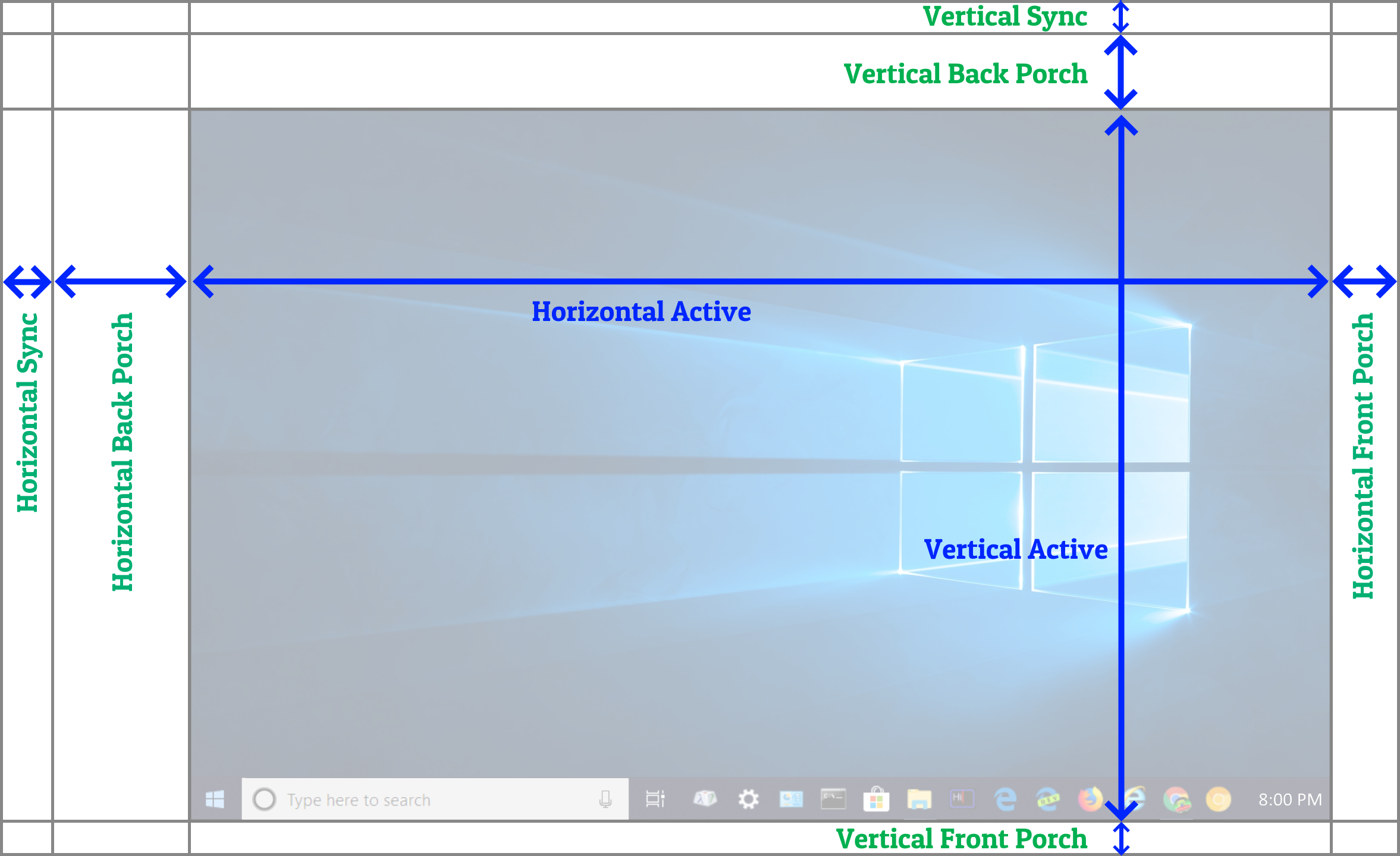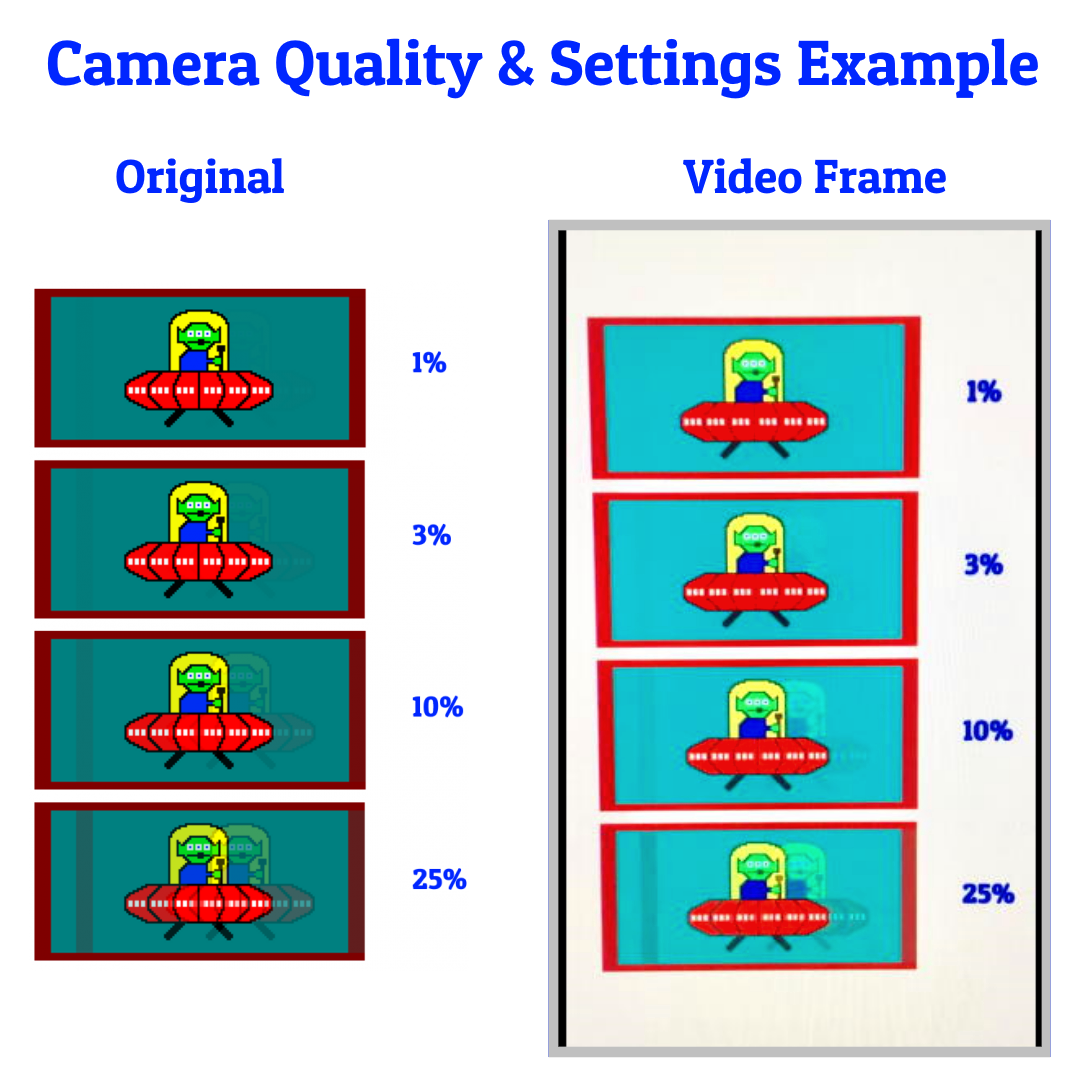- Extremely high DPI mouse (3200dpi may even be preferred over 1600dpi), with new mouse feet, new mousepad, new sensor
- Extremely good microstutter stutter control
- Games that have lots of smooth panning
- High contrast (more visible with very bright strobing in certain games)
- Low strobe crosstalk.
Lesson: Not all pixels refresh at the same time.axaro1 wrote: ↑12 May 2020, 16:51The refresh at 280hz is once every 3.57ms, the backlight strobes at the beginning of the second refresh in the 3.58-4.68ms range (the refresh is something like 1.1ms(Strobe)->2.47ms->1.1ms(Strobe)->2.47ms ...), so assuming that the first transition needed more than 3.57ms you have a 4.68ms margin of transition between the first and second frame with ELMB-Sync (and strobing in general)
Pixels are refreshed one pixel row at a time, with the bottom edge refreshing later.
The problem is that the little time of GtG needs to consider scanout latency (high speed videos), since you have to flash between scanouts.
It's possible that GtG is not finished at bottom edge of screen, when GtG starts anew at the top edge again! For typical Vertical Totals on most 240Hz panels, Vertical Total 1125, a screen spends 1080/1125ths of a refresh cycle "scanning" out.
960fps high speed videos of www.testufo.com/scanout (rotate between 4 images at full frame rates), shows how an LCD refreshes:
High Speed Video of Slower-GtG LCD
Pause a frame, and single step through this. You'll see situations where the bottom pixels are not finished when the top edge begins to refresh. That means 3 refresh cycles are visible simultaneously. That is not possible to strobe with zero strobe crosstalk.
Now, with faster GtG, you have something like this:
High Speed Video of Faster-GtG LCD
You can successfully time the strobe flash between refresh cycles, so you have mostly-complete scanouts, like this:
High Speed Video of Strobed LCD
(Blur Busters Approved XG270)
But it's hard to do it perfectly without strobe crosstalk, because GtG time can be bigger than the VBI time.
Now, at higher refresh rates, GtG completeness is difficult between VBIs. For "Vertical Total equivalent" 1125 (at the scaler/tcon level, or at the CRU level), the time spent refreshing is:
1/240sec = 4.1666ms
1080/1125 = 0.96
VBI time ~= 0.96 * 4.1666ms ~= 0.16ms
So 96% of the time is the scanout, and 4% of the time is the pausing. So 4% of a 240Hz refresh cycle is only 0.16 milliseconds. You can't squeeze GtG90% into that! Lest GtG100%...
Vertical Total = Vertical Resolution + Vertical Front Porch + Vertical Sync + Vertical Back Porch

Needless to say, GtG(100%) is not that fast, 0.16ms GtG(100%) is not currently possible.
On most 240Hz signals, the number of offscreen scanlines (VBI) is only 45 (1125 VT minus 1080 visible), and scanout of 45 lines is only 0.16 milliseconds.
Now, GtG is a trailbehind effect, so bigger GtG means GtG overlaps both the bottom and top edges, creating unsolvable strobe crosstalk that gets worse when you strobe closer to max Hz.
In the art of "cramming GtG between VBI", remember real-world GtG can last much longer than 1ms, and GtG below 10% / GtG above 90% is still human visible (see Pixel Response FAQ: GtG versus MPRT). Enlarging the blanking interval between faster scanouts can help a lot, which is why Largte Vertical Totals help a lot (or a scan-converting TCON).
This is why 120Hz-144Hz strobing on a 240Hz panel has less strobe crosstalk than most 240Hz strobing. But the higher refresh rate means smaller distances between stroboscopic jumps (Stroboscopic Effect of Finite Frame Rate Displays), so assuming crosstalk is equal AND fps=Hz, then crosstalk is less visible at 240Hz than at 144Hz.
However, if you control your microstutter limitations more (microstutter control is increasingly important in the Vicious Cycle Effect as improving display clarity makes microstutter more visible) -- the crosstalk becomes more visible again.
The bonus of ELMB-SYNC is that it can destutter the strobe-amplified microstutter to an extent, by avoiding VSYNC stutter (framedrop stutter) that is amplified during strobing. As long as your framerates stay near the max Hz (cap) your strobing can be jitterlessly beautiful, if all your other microstutter weak links are removed (engine based, mouse based, etc). When things are supersmooth though, strobe crosstalk can become your next quality weak link again (reappearing).
Also, worsening things, is that manufacturer GtG numbers are GtG10% to 90%, as by VESA, as read in Pixel Response FAQ: GtG Versus MPRT.
In addition GtG can sometimes slow down a little at max Hz, because pixels are metaphorical GtG soccer balls to be kicked. Faster refresh means less time per pixel to give each pixel a running start to give each pixel a faster kick. So sometimes higher Hz creates a slightly-slower-GtG effect (where 224Hz looks better than 240Hz, or 144Hz looks better than 165Hz, etc).
A faster scanout at a lower Hz helps create a bigger VBI. For example 120Hz with a 1/240sec scanout, creates a 4.16ms refreshtime and a 4.16ms VBI-time, which is the best way to reduce strobe crosstalk. Refresh rate headroom creates better strobing, 120Hz strobing on a 240Hz is superior to 120Hz strobing on a 144Hz panel, as well as being superior to 240Hz strobing on a 240Hz panel. The best CRT effect with strobing is usually fps=Hz well below max Hz.
Now, some more diagrams to educate GtG:
Lessons:
1. GtG numbers by manufacturers are from GtG 10% to 90%
2. Pixel visibility below GtG10% is still human visible
3. Pixel visibility above GtG90% is still human visible
4. GtG are different speeds for different colors, so over 60,000 GtG numbers for the same panel
5. Not all pixels begin refresh simultaneously. Worst-case simultaneous problem is [0ms....refreshtime+GtG] rather than [0ms...GtG]
6. VBI sizes are tiny (tiny pause between refresh cycle scanouts)
7. Now you understand the difficulty of solving strobe crosstalk fully.
I have more links in the Area 51: Display Science, Research And Engineering Forum if you have more questions
This is the bedrock of the Blur Busters Approved programme.




